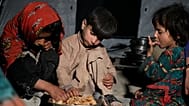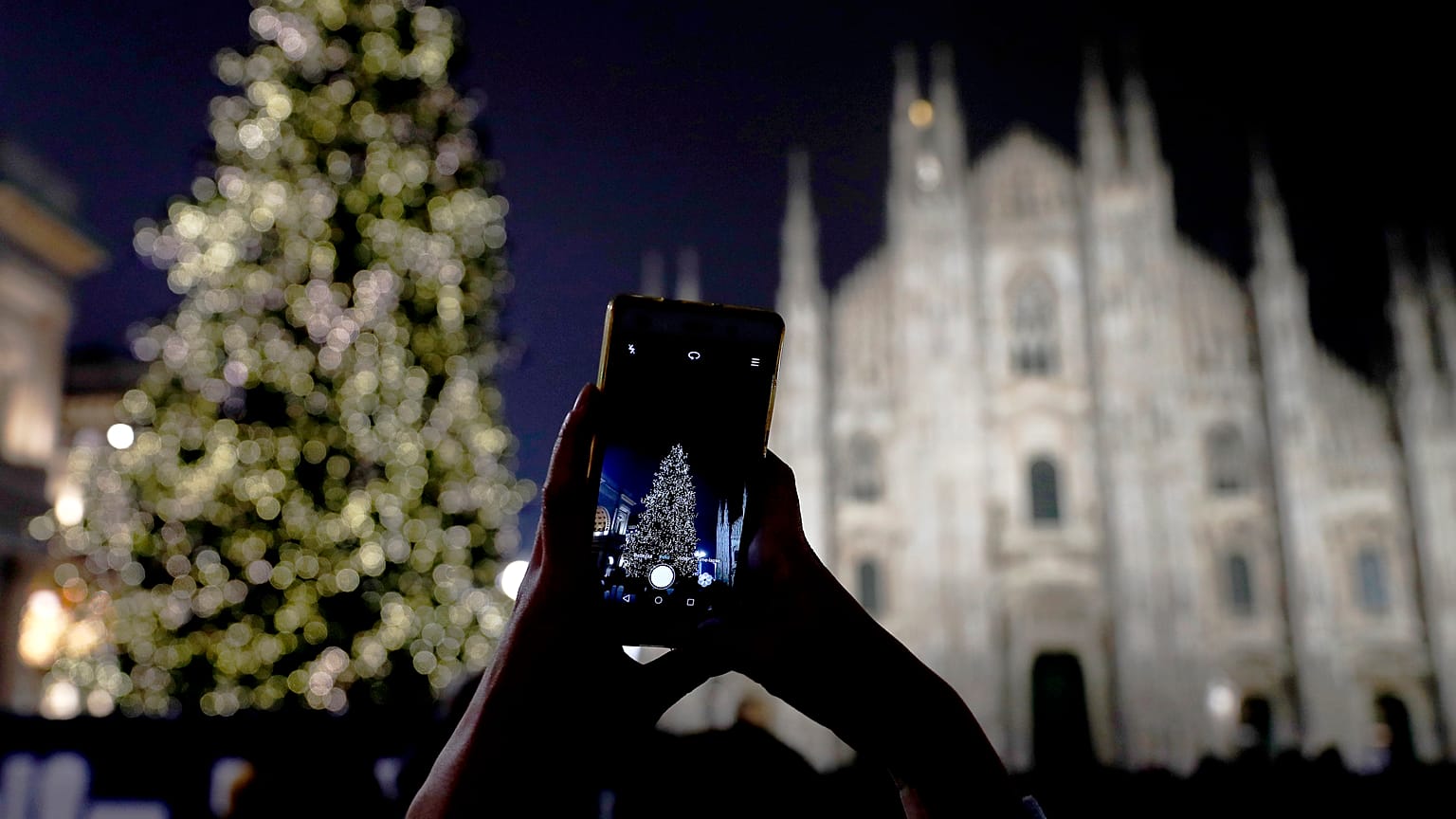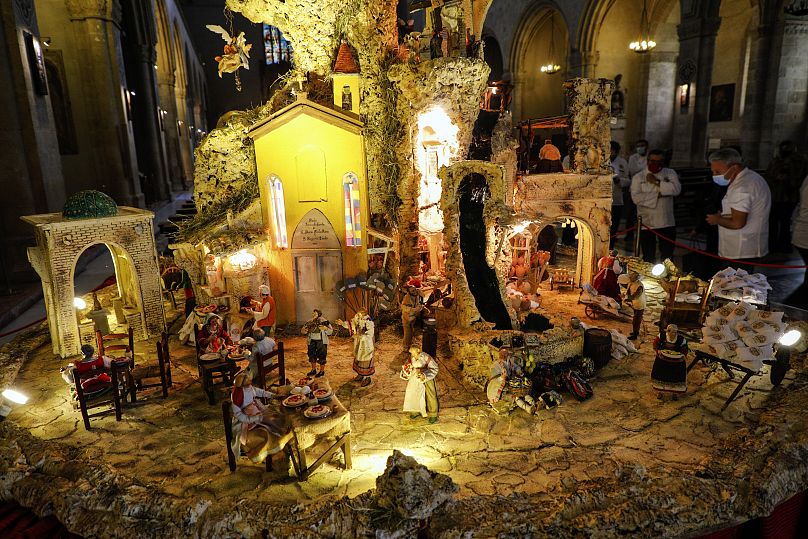Did you know Christmas celebrations were born in Italy?
In a calendar from 354 AD, we are able find the following words: “On the 25th of December, Christ was born in Bethlehem, Judea”.
This all sounds very nondescript until you learn this is the first recorded reference to Christmas Day, from a text written in Rome.
With Christmas as we know it having been born on Italian soil -- it was officially established by Emperor Constantine the Great in the 4th century -- the holiday has deep roots in the country and, to this day, retains much of its ancient, religious character.
Italy’s rich cultural diversity has resulted in a mosaic of festive traditions that differ widely from one region to the next. From elaborate nativity scenes and folk legends to lavish recipes, Christmas is a colourful occasion that connects Italians to their past.
But as the creeping influence of globalisation changes the holiday landscape, some question whether the country’s unique Christmas traditions will survive in years to come.
What are Italy’s Christmas traditions?
Italian Christmas traditions are strongly anchored in their centuries-old Christian and pagan heritage, as historians believe that Saturnalia -- an ancient Roman midwinter holiday marked by gift-giving and partying -- inspired many of today’s festive customs.
- The Feast of the Immaculate Conception (Festa dell’Immacolata Concezione) on 8 December officially denotes the beginning of the Christmas period in Italy, a public holiday when most cities turn on their festive lights and families get together to decorate their homes.
Following on from this, Saint Lucy’s Day (Santa Lucia) on 13 December is celebrated in certain pockets of the country, ranging from Bergamo and Verona in the north, down to Syracuse in Sicily.
The Novena (nine days) starts on the 16 December and marks the beginning of a crescendo into Christmas, as the tradition symbolises the journey of the shepherds to the manger.
Families take their children to special evening masses in church and go from door to door -- often dressing their youngest as little shepherds -- to perform Christmas carols for money or sweets.
Moreover, streets throughout the centre and south of the country are frequently lined with bagpipers (zampognari) playing Italy’s most famous festive song: “Tu scendi dalle stelle” (“You come down from the stars”).
Once Christmas Eve arrives on 24 December, celebrations kick-off -- despite the day not being recognised as an official public holiday -- and families start coming together as Midnight Mass remains an enduring tradition, even for the most lapsed of Catholics. Some households, especially in the south, will have their biggest meal on the 24th before heading off to church.
Christmas Day (Natale) is a heady concoction of food, wine, presents and religious ceremonies. Its quieter twin, Boxing Day -- known in Italy as Saint Stephen’s Day (Santo Stefano) -- is a decidedly more stress-free affair and is generally an opportunity to finish Christmas leftovers with extended family, followed by a mid-afternoon stroll (passeggiata) or a game of bingo (tombola).
Much like in the rest of the world, New Year’s Eve (Capodanno) and Day are universally observed in Italy, with families and friends gathering to party until the early hours, and subsequently unwinding the morning after. Such late-night revelries often take a darker turn, however - Italians’ love for makeshift fireworks and firecrackers sends hundreds to the emergency room every year.
Ultimately, the Epiphany on 6 January -- which for Christians celebrates Jesus’ manifestation to the three wise men -- brings the holiday season to a close on a particularly sweet note. According to Italian tradition, an old, witch-like lady (la Befana) flies from house to house on her broomstick, leaving sugary surprises for young children.
What do Italians eat for Christmas?
Culinary customs are closely shaped by their socio-political environment. This has meant that Italy -- a country which only came to exist in its current form 160 years ago -- has not produced a nationwide Christmas dish akin to the roast-and-stuffing staple that dominates the Anglo-American festive season.
The dizzying diversity of dishes served at the Christmas table throughout Italy is not only a testament to its profound ethnolinguistic and cultural heterogeneity but of its stark geographical and climatic differences too. In a country where Christmas lunch can just as much mean huddling together by the fireplace in a Tyrolean chalet as it can an alfresco affair under the blazing, 20°C sunshine of the Sicilian coast, festive menus are inevitably bound to look drastically different from one region to the next – and at times, even from town to town.
Northern Italian festive meals tend to be hearty, meaty, and brimming with butter. Roast capon chicken (cappone), stew (bollito), stuffed pasta (ravioli or agnolotti) and polenta are among the many traditional recipes served as a main course for the holidays. Milan’s Panettone and Verona’s Pandoro cakes tower over the dessert landscape, although many others – from nougat to tiramisù and spongada (sweet bread) - are also widely enjoyed. With the exception of certain regions, Christmas lunch is usually the biggest meal in the north, with the 24 December dinner generally being a low-key affair.
Head further south, and seafood takes centre stage, with eel, cod and octopus being popular choices on Christmas Eve dinner, which is usually the main festive meal. Over in Sardinia, a type of couscous-shaped pasta (fregola) with mussels often makes an appearance. But even in the south, diversity rules the day at the Christmas table.
“We don’t have a typical dish for Christmas,” Saghir Piccoletto, a chef and restauranteur in on southern Italy’s Amalfi Coast, told Euronews. “[Although] many do eat baccalà [cod]”.
Christmas Day itself in the south is usually a carb marathon, with pizzarieddri (a type of long, homemade macaroni) in Apulia’s tip, Salento, and pasta al forno (baked pasta) in Campania being among the plethora of commonly served dishes. As the south’s Mediterranean cuisine substitutes butter and lard with olive oil, desserts tend to be deep-fried – sweet dough balls (struffoli), doughnuts (zeppole) and honey-soaked pastry wheels (cartellate) being two beloved examples – although Panettone and Pandoro have become increasingly favoured as well.
Despite many inter-regional takes on the Christmas menu, perhaps the clearest divide is between the north and south. Given the large wave of southern Italian workers who moved to the country’s industrialised north in the 1950s and 60s, many northern families have southern ancestry, leading to a unique fusion of customs at the festive dinner table.
Riccardo, a university student from outside Florence whose family is half Tuscan and half southern (Apulian), noted how his mixed regional heritage plays out over the holidays.
“There’s a big difference between how my mum and dad celebrate Christmas,” he told Euronews. “My southern mum always prepares a huge dinner on the Eve with lots of Apulian seafood dishes, while my dad prefers to have Christmas lunch and to serve Tuscan specialities like tortellini in brodo [pasta broth]. We’ve now ended up celebrating both days.”
Unlike Christmas, nevertheless, the New Year’s Eve menu is something most Italians can agree on – a main dish consisting of cotechino (a large pork sausage) with a side of lentils and a slice of Pandoro for dessert would be the most common sight throughout the country. Southern Italians frequently top it all off with the custom of eating twelve grapes at midnight - a leftover of the Spanish rule in the area.
Italy's most beloved Christmas tradition: nativity scenes
Perhaps the thing that most unites Italians around Christmas time -- religious observance and copious meals aside -- is their love for ornate nativity scenes – or presepi.
Saint Francis of Assisi is said to have given birth to the tradition in 1223, after he staged a "living" nativity scene made up of villagers and animals in the hilltop town of Greccio, not too far from Rome.
Since then, the custom has morphed into a true household art form and one of the country’s most beloved festive traditions.
“The nativity scene was born in Italy, and for centuries now is a well-established tradition in all homes, boasting a vast range of craftsmen and enthusiasts,” Alberto Finzio, the president of the Italian Association of Friends of the Nativity Scene (Associazione Italiana Amici del Presepio, AIAP) told Euronews. The association was founded in 1953 to celebrate and protect the art of presepi and is part of an international federation with chapters across Europe and South America.
While noting the existence of numerous nativity scene traditions across various European countries, Finzio remarked on how its enduring popularity in Italy is closely tied to Papal influences.
“The fact that the Holy See is in Italy isn’t of secondary importance,” he added. “In recent years [the Vatican] has strongly promoted the nativity scene tradition - think of Pope Francis’ apostolic letter, ‘Admirabile Signum’.”
But nativity scenes in Italy go well beyond their religious roots: crib aside, a classic presepi will typically include an entire miniature village, with figurines representing local stock characters and craftspeople.
From South Tyrol’s maplewood cribs to Apulia’s papier-mâché figurines, there are various presepe customs throughout the country. The Neapolitan tradition, however, is the undisputed jewel in the crown.
A true fine art form in and of itself, the Neapolitan presepe is lavish and Baroque, harking back to the 18th-century Bourbon era when the tradition reached its zenith. Its craftsmen (presepai) have been working in the trade for generations, and take significant pride in their work.
“The presepe tradition is an outright cult in Naples,” Mauro Gambardella, the owner of an artisan shop Via S. Gregorio Armeno -- the city’s longstanding hub of presepai -- told Euronews. “My father, Luciano, opened this store in 1954, and my grandfather was a presepaio too, although he’d only do it in his spare time.
“The Neapolitan presepe is a true reflection of life in this city,” Gambardella added. “You have the pizzaiolo [pizza maker], the salumiere [pork butcher], and so on.”
Echoing Gambardella’s words is Rossella Zeno, another presepe-maker in Naples. Unlike Gambardella, she is part of a newer generation of presepai, who only took to the craft seven years ago.
“The presepe goes beyond Christmas itself,” she said, speaking to Euronews. “It’s a reminder of our life here in Naples, of our joie de vivre, that brings us back in time and connects the past to the present.”
And the present-day sometimes makes its own appearance. While controversial as a practice, certain Neapolitan artisans sell figurines of modern-day celebrities and politicians, including Argentine footballer and local deity Diego Maradona, former Italian prime minister Silvio Berlusconi, and the 45th US President, Donald Trump.
Are Italy’s Christmas traditions under threat?
In spite of the strongly religious character of Italian Christmas traditions, growing secularism and globalisation have resulted in some new additions to the country’s festive customs.
The most obvious example is that of Christmas trees. They may have now become a well-established part of Italy’s festive heritage -- even making headlines for their record-breaking size, such as the Mount Ingino tree in Umbria, or for all the wrong reasons, like Rome’s infamous, half-dead Spelacchio -- but they are not a longstanding part of the country’s cultural history. While Christmas trees do appear in Italy as early as the 19th century, they would only become a household fixture in the 1950s and 60s as a result of post-war American influences.
The same goes for Santa Claus. Nowadays, children throughout the country await Babbo Natale (Father Christmas), but the traditional gift-bearer on Christmas Day used to be baby Jesus (Gesù bambino). In many households, syncretism is now the rule of day as the two figures are often used interchangeably.
Nonetheless, creeping commercialism is not only adding, but even changing some festive customs. Indeed, while the 8 December once marked the beginning of Christmastime, lights and decorations are now popping up in Italian cities as early as Halloween. And Black Friday has now become an informal part of the festive calendar, as Italians clamour to shopping centres to get their hands on discounted goods.
While these commercial influences may have added to and even altered the Italian holiday landscape, its main customs have been largely left intact. Some, nevertheless, still fear that certain more unique traditions - namely the presepe - could be eroded over time.
Over at AIAP, the mood remains somewhat optimistic.
“Back in the ‘60s and ‘70s, [the presepe tradition] was at risk,” Finzio asserted. “But I don’t believe that’s the case anymore.”
The COVID-19 pandemic, he argued, actually boosted the popularity of Nativity scenes in the household. “Many families, being forced to stay at home, actually rediscovered the value of the presepe.”
















